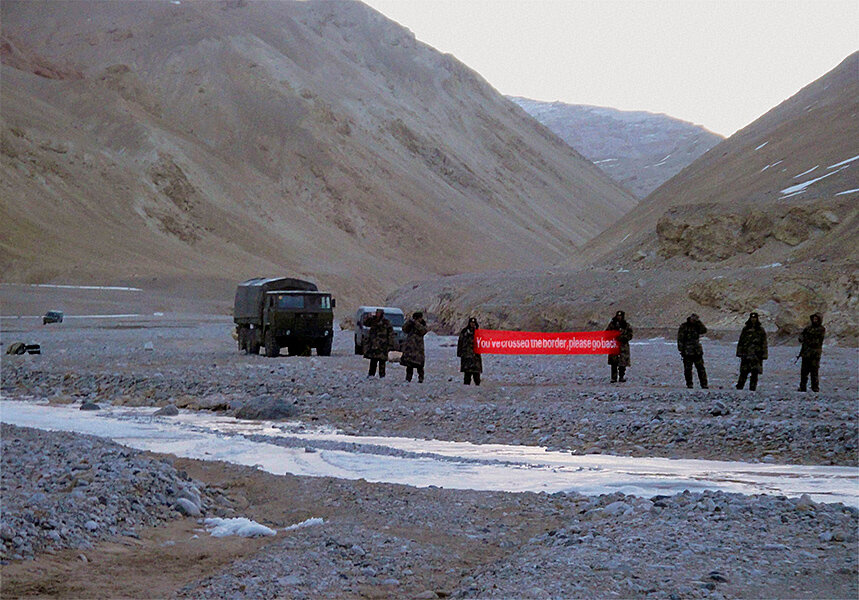India scales up military forces on disputed China border
Loading...
| New Delhi
India is raising a new mountain strike corps of nearly 90,000 soldiers to strengthen its defense along its disputed border with China in the high reaches of the Himalayas.
China will be a top foreign policy challenge for Narendra Modi, the incoming prime minister who won a landslide victory last week. Business ties between India and China are booming. But despite rounds of talks, the two countries have yet to resolve their decades-old dispute over the 2,000-mile border between the two countries. It remains one of the most militarized borders in the world.
The strike corps will have its own mountain artillery, combat engineers, anti-aircraft guns, and radio equipment. Over 35,000 soldiers have already been raised in new infantry units in India's northeastern state of Assam. The entire corps will be fully raised over the next five years with 90,274 troops at a cost of $10.6 billion. The proposal to raise a new strike corps was recommended last year by India’s China Study Group, a government body that considers all strategic issues related to China.
The strike corps signals a new assertiveness in New Delhi and will provide an additional defense capability to India, which for a long time focused on the land borders with Pakistan. While the decision predated Mr. Modi, he is likely to further strengthen India’s military modernization which is one of his party's top agenda items.
"China has made frequent border transgressions into Indian border,” says retired Lieutenant General Prakash Katoch, who formerly commanded the Indian Army's Special Forces wing. "The new prime minister has to ensure that our borders are well protected. It cannot be business as usual."
He predicts that as both countries are growing and keen to increase their influence, China and India will increasingly step on each other's areas of interest and importance.
Lingering grievances
India and China fought a brief border war in 1962. Ever since, the relationship between the neighboring Asian countries has been mired in distrust, although business ties between India and China are robust: they share over $70 billion in annual bilateral trade, a figure that’s projected to rise in the next decade.
China lays claims to more than 35,000 square miles of land in the eastern sector of the Himalayas, while India says China occupies 14,600 square miles of its territory on the Aksai Chin plateau in the west. Last year in May the two armies ended a three-week standoff in the Ladakh region after Chinese troops entered at least six miles into territory claimed by India. China denied that troops had crossed into Indian territory. Since then both the countries have taken a number of steps to reduce border tension including prior notice of military patrols along the ill-defined border.
Yet both countries are building roads, railroads, and airfields along the border, which would facilitate the rapid movement of troops and artillery to the border zone. Having seen the massive improvements China has made in its border infrastructure, India is now building roads and upgrading its airfields along China's border and deploying attack helicopters and fighters jets to them. Eventually, C-130J planes, bought by the Indian Air Force from the US, will be deployed in the eastern command. The multi-tasking C-130J is the most advanced special operations aircraft in the world that can transport troops to remote places.
“We lost the war in 1962 [with China] because we had no connectivity to our borders," says Maj. General P.L. Kher (ret.), a veteran of 1962 war. “We lost the war because we were poorly trained and equipped. We want friendship with China but there is no reason that we should not strengthen our military capability.”
At one of the Indian border posts during the 1962 war, out of 60 Indian soldiers who were guarding the post only 14 survived, including Kher.
The 1962 war and India’s defeat remains a subject many within the Indian military establishment do not like to discuss. The inquiry report about why India lost the war remains a top secret. India’s traditional policy has been not to build any offensive military formations along the China border, fearing it might provoke Beijing.





